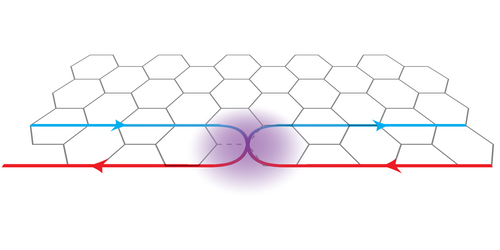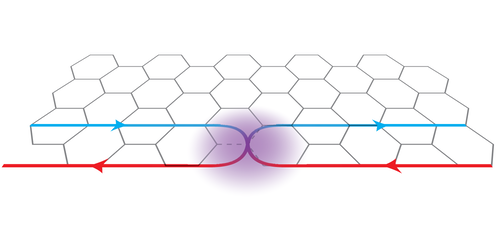Interrupting Flow in a 2D Topological Insulator
A topological insulator can conduct a current along its outside edges, despite its insulating properties. Theory predicts this current is unaffected by material defects, but experimentally, researchers have only seen uninterrupted conductance over short distances in 2D topological insulators. Now, Marco Polini, of both the Italian Institute of Technology and Manchester University, UK, and his colleagues have developed a theory that explains this breakdown in conductance. Understanding the origin of this phenomenon could allow researchers to design 2D topological insulators without conductance breakdown, increasing the potential applications of these materials, which include quantum computing.
The team’s model accounts for the effects of nonmagnetic impurities at the edges of a topological insulator and the interactions among the material’s electrons. They found that when a nonmagnetic impurity is surrounded by interacting electrons, it acts as if it were magnetic. The resulting localized magnetic fields that develop around the impurities backscatter electrons at these sites, disrupting current flow. This disruption can be likened to that seen when people walk in the opposite direction to the flow of a crowd and obstruct the crowd’s progress.
While Polini and his colleagues are not the first to suggest that interactions between electrons and nonmagnetic impurities could disrupt the conductance of a topological insulator, they are the first to predict that this behavior occurs even when the material is at a temperature of zero kelvin. Recent experiments indicate that the conductance of a 2D topological insulator is temperature independent, a result that bolsters confidence in the group's proposed model.
This research is published in Physical Review Letters.
–Meredith Fore
Meredith Fore is a freelance science writer and a graduate student at the University of Washington, Seattle.
Correction (7 January 2019): The original headline of this article incorrectly stated that the model considered magnetic impurities. They are nonmagnetic.





